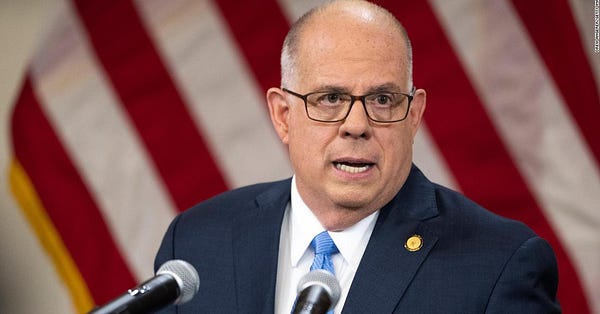Attica was worse than you imagined
Girard reached 1000-point milestone for college career at Syrcause
The Front Page
Morning Update
Monday, February 14, 2022
By Ken Tingley
If you grew up in upstate New York you probably know about Attica the prison, and then Attica the riot.
The maximum security facility southeast of Buffalo in western New York was the site of a brutal uprising in 1971 where inmates managed to take over a large part of the prison for five days.
You also know it ended with state police and National Guard storming the prison after negotiations failed.
It is also the subject of a new documentary by Stanley Nelson that has been nominated for an Academy Award this year. It revisits the tragic events of those five days in September 1971 with 50 years worth of hindsight. It also includes rarely seen film footage taken by the state that is chilling.
You might not be interested in reliving these gruesome events, but this is also a prison community. Many local people have worked in local prisons and jails at Comstock and Mount McGregor. Many have prison workers in their families. Attica was one of those suburban prison communities.
Considering these times of renewed concerns about racism, revisiting Attica is relevant.
Inmates who were at Attica are interviewed for the documentary along with members of the negotiating committee and family members of the hostages.
A prison riot broke out on September 9, 1971 and the inmates were able to take over a large part of the prison while taking more than 30 guards hostage. One guard was beaten badly during the takeover. Four inmates got him outside so he could get medical attention.
The story of Attica is far more nuanced than I ever realized. After the prisoners took over the prison, they elected leaders to negotiate the release of the hostages. They formed a security detail to make sure the hostages and the negotiating committee from the outside were not harmed. When the prison officials turned off the water, some of the inmates who had been to Vietnam showed the others how to dig latrines to deal with the sewage.
We learn that Attica was known as “The Last Stop” among maximum security prisons at the time. We learned that the prison population was mostly black and brown while the prison guards were all white. We are told that guards who had grown up in rural and suburban neighborhoods could not relate to the inner city inmates in their control and looked at them as inhuman.
The documentary shows little sympathy for the inmates. These were mostly bad men who had committed horrible crimes. But what the documentary does address is whether those incarcerated deserved to be treated humanely.
The prisoners demands from the beginning were basic human necessities. They wanted to have toothpaste, soap, working toilets, showers and better medical treatment. One inmate described how he was given one roll of toilet paper each month. When he ran out, he had to do without. They also asked that no repercussions be made against them for the prison takeover.
They asked for prominent national figures to be part of a negotiating committee that would represent their demands. They included lawyer William Kuntsler, a former U.S. senator, the publisher of the Amsterdam News and a black television reporter.
During the early negotiations, Russell Oswald, NY Commissioner for Corrections met with the prisoners face to face. Most of their demands seemed reasonable and
28 of the inmates 30 demands were initially agreed to by correction department officials.
If you didn’t know how this ended, you might think that a peaceful solution was within reach. But on the fourth day, the guard who had beaten during the takeover died.
Everything changed.
The last half-hour is a chilling recounting of how the police and National Guard took back the prison.
Helicopters swooped in low over the prison walls and dropped gas that burned the prisoners’ skin and eyes. Police and National Guard stormed the prison grounds armed with rifles and shotguns. The inmates were armed with pipes, baseball bats and homemade knives. In the film footage you can hear the hear the inmates being told to surrender to police while gunfire cuts down those running to do so.
When the shooting stopped, the first reports from the authorities said that 10 guards had died after having their throats cut. But several days later, the medical examiner said that was untrue. None had died that way. They had all died from gunshot wounds.
Twenty-nine of the inmates died as well. Inmates said that many of the inmates’ leaders were sought out and murdered by the guards. They recounted how they were tortured during the hours after the prison was retaken.
Perhaps, the most disturbing part of the documentary is the footage of the aftermath where the prisoners are paraded naked through the prison grounds and made to crawl through the human feces in the makeshift latrines. Inmates described how they were forced to run naked through broken glass while being beaten with hoses and clubs.
The documentary concludes with the information that the state later settled with inmates, hostages and families of deceased hostages for $24 million.
Attica is part of New York disturbing prison history and the racism that is often displayed in these institutions. You have to wonder if it is any better today. “Attica” the documentary will change how you view Attica in history.
It may also change how you view your fellow man.
(You can watch “Attica” on Amazon Prime).
Girard reaches milestone
Glens Falls’ Joe Girard III scored his 1000th career point during a loss to Virginia Tech Saturday night.
Girard has become a respected point guard in the ACC this year, but Syracuse has struggled with very little help off the bench. They also lost their most improved player, center Jesse Edwards to a broken wrist. It appears unlikely that Syracuse will reach the NCAA tournament this year.






Great, great, great for Gov. Hogan! Wish there were many more Republicans like that.
Back in the late 1990's, I visited someone at Wyoming Correctional Facility which is right next door to Attica. We were outside, and the wall to the prison was right there. You could almost touch it. What an intimidating structure!! Never thought a wall could feel so threatening! I could hear men cheering on the other side. It sounded like they were watching a baseball game or something.